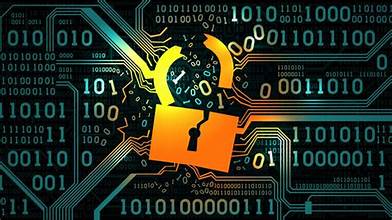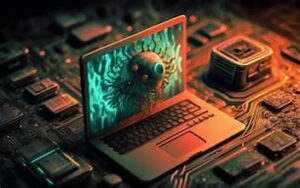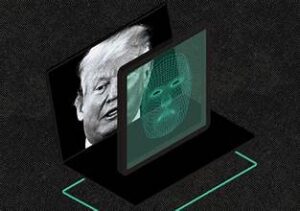The Evolution of Computer Viruses: What’s Next in Cyber Threats

Computer viruses have become a common occurrence in the digital age. These malicious programs have come a long way from the early days of personal computing to the sophisticated cyberattacks of today. What does the future of computer viruses hold, though? This article will examine the evolution of computer viruses over time and discuss potential future threats.
Introduction to Computer Viruses
Consider that your computer is a house. Similar to how burglars can break into a house, computer viruses are a type of malicious software that can infect your computer. Like a burglar taking your possessions, these viruses are made to corrupt or steal your data. However, how did these online dangers emerge, and what does the future hold?
Early Days: The Birth of Computer Viruses

In the beginning, computer viruses were comparatively simple. The 1970s saw the development of the Creeper, the first known virus. Designed to move from one mainframe to another and display a message, it was more of an interesting toy than a serious threat. Computer viruses were essentially small-scale practical jokes back then, more intended to show off what could be done than to do actual harm.
The Rise of Malware: 1980s to 1990s
In the 1980s, as computers became more personal, so did the threats. One of the first real dangers to computers was the Brain virus, which first surfaced in 1986. It could actually harm data corruption and spread via floppy disks. It was during this time that lighthearted experiments gave way to significant cyberthreats. As viruses started to change, so did the requirements for antivirus protection.
The Internet Era: Viruses Go Global

The internet entered homes and workplaces in the 1990s, which significantly accelerated the spread of computer viruses. A large-scale email worm from 2000 called the ILOVEYOU virus demonstrated how quickly viruses could proliferate and cause extensive harm. It was similar to giving strangers access to your entire neighborhood after you opened your door to them. This era demonstrated the need for improved cybersecurity defenses and demonstrated how computer viruses were spreading around the world.
Sophistication Increases: The 2000s
Computer viruses evolved in sophistication during the 2000s. They could now carry out sophisticated attacks and steal personal information in addition to merely corrupting files and displaying obtrusive messages. Emerging trojans and worms that could evade conventional antivirus software were discovered. They resembled expert lock pickers who knew how to get past security measures without leaving any trace. More sophisticated security solutions and increased user awareness were needed for this evolution.
Modern Threats: Ransomware and Spyware

Ransomware and spyware are two common forms of computer viruses in today’s market. Spyware surreptitiously records your online activities, while ransomware encrypts your data and requests payment to unlock it. These threats are similar to intrusive surveillance and high-stakes hostage scenarios. Because of their potential to destroy companies and compromise privacy, cybersecurity needs to be everyone’s top concern.
The Role of Artificial Intelligence
The development of computer viruses is currently being significantly influenced by artificial intelligence (AI). AI is used by cybercriminals to create viruses that are more difficult to detect because they can adapt and evolve. It’s similar to up against a foe who is always learning and refining their strategies. AI-driven viruses pose new difficulties for cybersecurity experts since they can customize their attacks based on your behavior.
The Internet of Things (IoT) and Cyber Threats
Computer viruses are becoming more and more likely as more devices are linked together via the Internet of Things (IoT). Consider a hacking incident involving your car, thermostat, and refrigerator. IoT devices frequently have less robust security, which makes viruses easily target them. This connectivity can result in a variety of issues, ranging from invasions of privacy to physical harm.
Emerging Threats: Deepfakes and Beyond

Novel technologies such as deepfakes pose novel challenges. AI is used by deepfakes to produce phony but realistic audio and video recordings. These can be used to spread false information and commit fraud, making it difficult to tell what is real from fake. Digital security is made even more complex by the idea that you are living in a world where your senses are no longer reliable.
How to Protect Yourself from Computer Viruses
An effective defense against computer viruses consists of a mix of preventative measures and equipment. Make sure your operating system and apps are up to date, use dependable antivirus software, and avoid clicking on dubious emails and links. Consider it as making sure your doors are locked, installing alarms, and being selective about who you allow inside your house. Creating strong, one-of-a-kind passwords and performing regular backups are also essential for protecting your data.
Future Predictions: What’s Next?

In the future, we can anticipate that computer viruses will keep developing. Technology is advancing, and quantum computing is one area where new cyberthreats could appear. Staying informed, implementing new security technologies, and enhancing our defenses constantly are all part of preparing for these changes. It’s similar to getting ready for a future where the obstacles change constantly, but the objective—keeping our digital lives safe—stays the same.
Conclusion
The development of computer viruses is a reflection of larger shifts in cybersecurity and technology. These threats have grown in complexity and impact over time, moving from early practical jokes to more intricate attacks. Through a thorough understanding of their past and continuous innovation, we can enhance our defenses against potential cyber threats in the future. Keep in mind that being alert and flexible are essential for staying safe in the digital age.
FAQs
1. What are computer viruses?
Computer viruses are malicious programs designed to damage or disrupt computers and networks. They can steal data, corrupt files, or cause other harm.
2. How have computer viruses evolved over time?
Computer viruses have evolved from simple pranks to sophisticated threats that can steal data and cause widespread damage. Advances in technology have made them more complex and dangerous.
3. What is ransomware and how does it work?
Ransomware is a type of computer virus that encrypts your files and demands payment for their release. It locks you out of your data until you pay a ransom.






One Comment